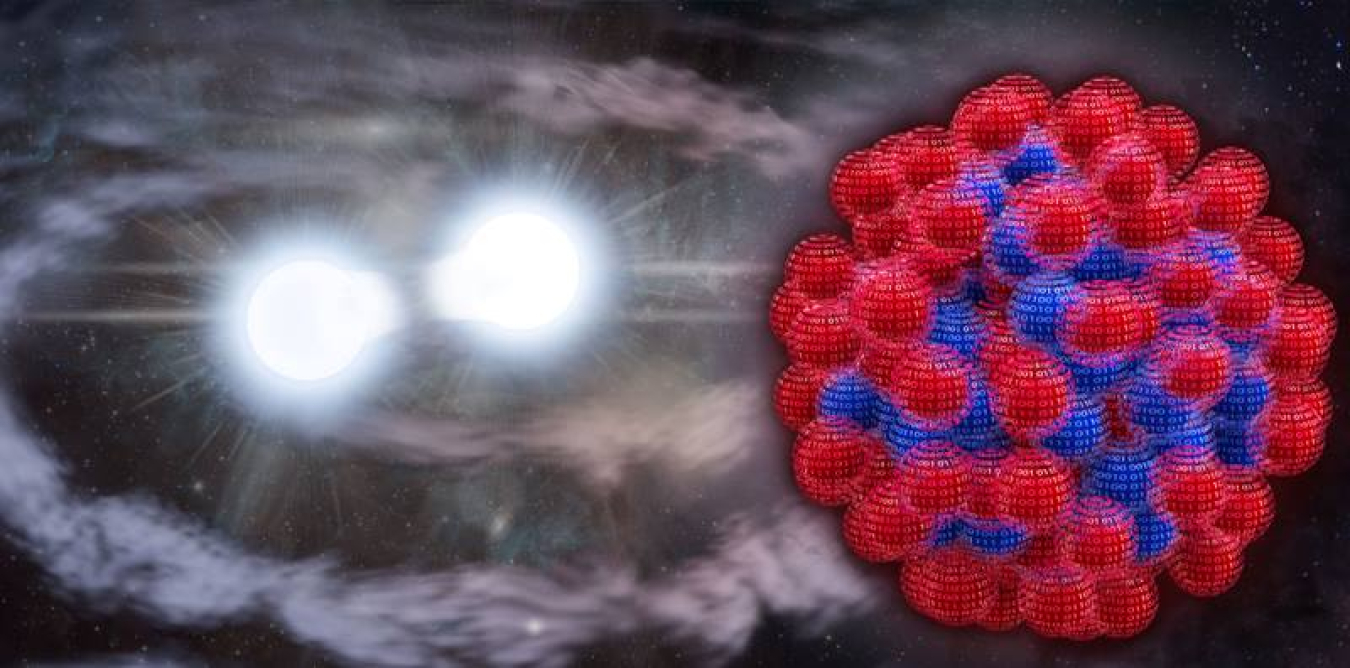Powerful statistical tools, simulations, and supercomputers explore a billion different nuclear forces and predict properties of the very-heavy lead-208 nucleus.
March 1, 2023
The Science
It isn’t easy to describe the structure of a quantum mechanical system of 208 strongly interacting protons and neutrons based on two and three-nucleon forces. However, powerful statistical tools, machine learning, and models run on supercomputers make it possible to explore a billion different nuclear force models. This allows scientists to make quantitative predictions about the structure of atomic nuclei and their interactions. Scientists used this approach to study the nucleus of lead-208 and predict its neutron skin. This skin is the difference between the radii of the distributions of neutrons versus protons in the nucleus. The result is smaller and more precise than that obtained from a recent experiment.
The Impact
The results show physicists can filter just a few dozen models of the nuclear force from a billion trials to locate a needle in a haystack of possibilities. Testing 1 billion models on a supercomputer would take 1 billion hours. Instead, the scientists developed emulators. These are computer programs that are trained to mimic full-scale calculations but that only require a tiny fraction of the computing time. The scientists found that the neutron skin is constrained by nucleon-nucleon scattering data. That finding is in contrast with other models. Applying these tools lets researchers explore how protons and neutrons interact to build many other nuclei and improves understanding of physical states in matter from neutrons to neutron stars.
Summary
The development and running of emulators on supercomputers made it possible to perform billions of simulations of properties of nuclei and enabled entirely new ways of making quantitative predictions. Using history matching, a technique borrowed from oil explorations, researchers identified models that agree with existing data on lightweight nuclei. They then calibrated their models on medium-mass nuclei and identified 34 acceptable parameters for expressing the nuclear force, which were used to make a probability distribution of the neutron skin in the heavy nucleus lead-208. These computations relied heavily on the computing resources at the Oak Ridge Leadership Computing Facility, a Department of Energy (DOE) Office of Science user facility at Oak Ridge National Laboratory.
The investigators accurately reproduced bulk properties of lead-208 and its neutron skin. The new prediction is in slight tension with a recent experiment (that has a larger uncertainty) and puts the ball back in the experimenter’s court. This work demonstrates how realistic two- and three-nucleon forces act in a heavy nucleus and allows quantitative predictions across the nuclear landscape.
Contact
Gaute Hagen
Oak Ridge National Laboratory, Physics Division
hageng@ornl.gov
Funding
This work was supported by the DOE Office of Science, Office of Nuclear Physics, and DOE’s Scientific Discovery through Advanced Computing (SciDAC) program. Computer time was provided by the Innovative and Novel Computational Impact on Theory and Experiment (INCITE) program. This research used resources of the Oak Ridge Leadership Computing Facility located at Oak Ridge National Laboratory, which is supported by the DOE Office of Science.
Publications
Hu, B., et al., Ab initio predictions link the neutron skin of 208Pb to nuclear forces, Nature Physics 18, 1196–1200(2022). [DOI: 10.1038/s41567-022-01715-8]
Related Links
Chalmers University of Technology highlight: Revealing the Mysteries of the Universe Under the Skin of an Atomic Nucleus
University of Tennessee, Knoxville highlight: Getting Under the (Neutron) Skin
Nature News & Views: A Historic Match for Nuclei and Neutron Stars

